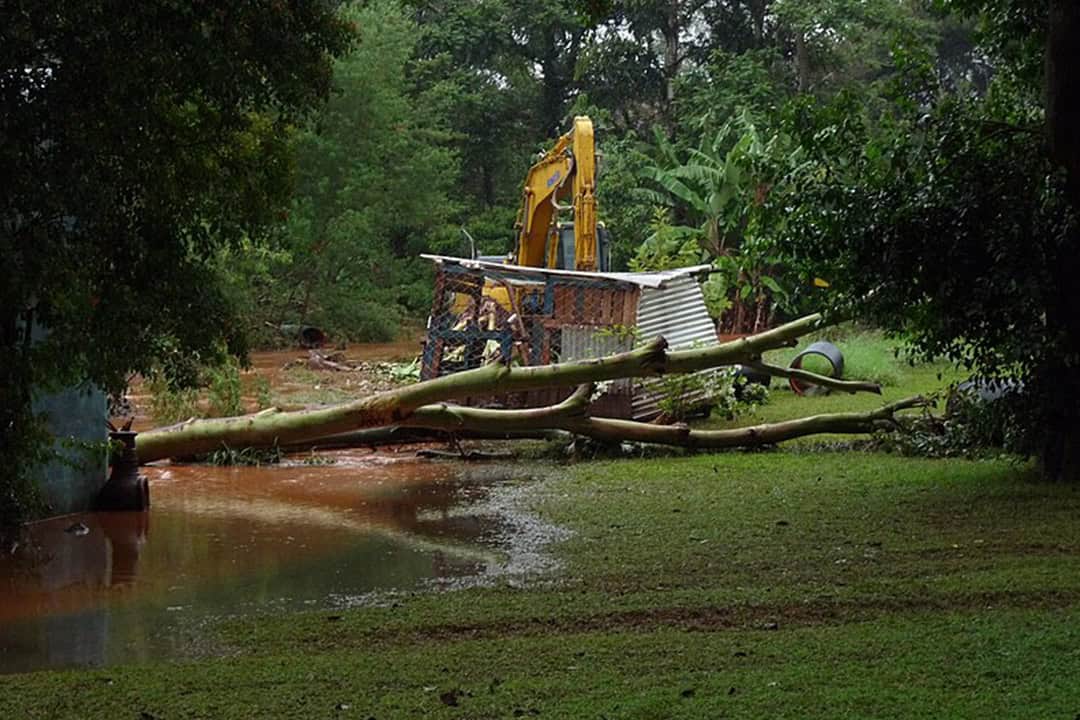On April 29, more than 45 people died after a river tunnel was blocked in the town of Mai Mahiu, Kenya. In an article published by The Guardian, residents recount that the flash flooding at night destroyed vital crops, homes, schools, and roads. This destruction has had devastating consequences for residents, further aggravating the nation’s public health and socioeconomic vulnerabilities.
On May 17, The United Nations Office for the Coordination of Humanitarian Affairs (OCHA) reported waterborne illnesses such as cholera and diarrhea in the region, as the flooding contaminated several clean water sources. According to recent figures from OCHA, since March of this year, approximately 280,000 people have been displaced, 291 have lost their lives, and flash floods have damaged 64 healthcare facilities.
Kenya’s ‘long rains’ season, lasting from March to late May, is characterized by heavy downpours notorious for interfering with daily life and is likely what caused the dam to burst. Unfortunately, according to experts from the academic collaboration — World Weather Attribution — the floods and extreme rainfall witnessed globally in recent years are not normal — and almost certainly fuelled by climate change.
Why have seasonal rains become so intense?
Abundant rainfalls sustain Kenya’s lush rainforests. Naturally occurring floods play an important ecological role in allowing a river’s water to reach more areas and restore essential nutrients to the Earth.
However, Kenya’s seasonal weather pattern has been distorted and intensified by the El Niño-Southern Oscillation weather phenomenon — a climate phase that raises global temperatures, leading to more extreme weather.
The El Niño phenomenon has worsened due to high and increasing carbon emissions from fossil fuels. As global warming continues, more land- and ocean-water evaporates into the air and leads to heavier precipitation when the moisture converges into a storm.
Countries bordering the Indian Ocean like Kenya also experience seasonal rains triggered by the positive phase of the Indian Ocean Dipole (IOD): a naturally occurring fluctuation in temperatures across the Indian Ocean. During the positive phase, warm waters flow to the west surface of the Indian Ocean, and cold waters rise to the surface in the east. Conversely, in the negative phase, cold waters flow to the west and warm waters flow to the east. The positive phase in the IOD causes increased rainfall and flooding, while the negative phase causes droughts and heat waves.
While insufficient emergency preparations and poorly maintained infrastructure created conditions for disaster to occur, climate change exacerbates these conditions by altering ocean temperatures — leading to more frequent and intense IOD events, such as the 2024 torrential rains in Kenya.
Consequences of heavy downpour in Kenya
While Kenyan President William Ruto promised a 10,000 shilling stipend to households displaced by the floods, this is only a short-term solution. The rains will have negative long-term effects on the country’s infrastructure, economy, food security, and public health.
During a press conference on May 8, the Kenyan Government Spokesperson Isaac Mwaura reported that the devastating floods caused more than 80 billion shillings’ worth of infrastructure damage. Dams, roads, bridges, homes, schools, and healthcare facilities were swept away by the floods, displacing and disrupting thousands of livelihoods.
Food insecurity is also rampant as agricultural productivity declines due to the loss of crops and livestock. The floods destroyed over 60,000 acres of cropland. In the days following the floods, the World Health Organization reported 44 cholera cases in Tana River County, one of the areas most affected by the flooding. This is due to water sources becoming contaminated and sanitation facilities being destroyed. Moreover, a major water treatment plant was affected by the flood, resulting in a shortage of potable water for over 3,000 people.
Prevention measures
According to the UN agency World Meteorological Organization, “Africa is responsible for only a fraction of global greenhouse gas emissions but is suffering disproportionately from climate change.” Africa’s vulnerability to climate change is primarily driven by the African governments’ insufficient allocation of resources toward infrastructure to cope with its impacts.
In order to prevent a humanitarian crisis caused by the seasonal rains in Kenya, capital resources need to be allocated towards building and maintaining proper drainage systems, dams, water treatment plants, and healthcare facilities in counties remote from the capital. Additionally, governments, non-governmental organizations, and communities must work together to reduce carbon emissions, as they remain the root cause of the rise in extreme weather events.



No comments to display.